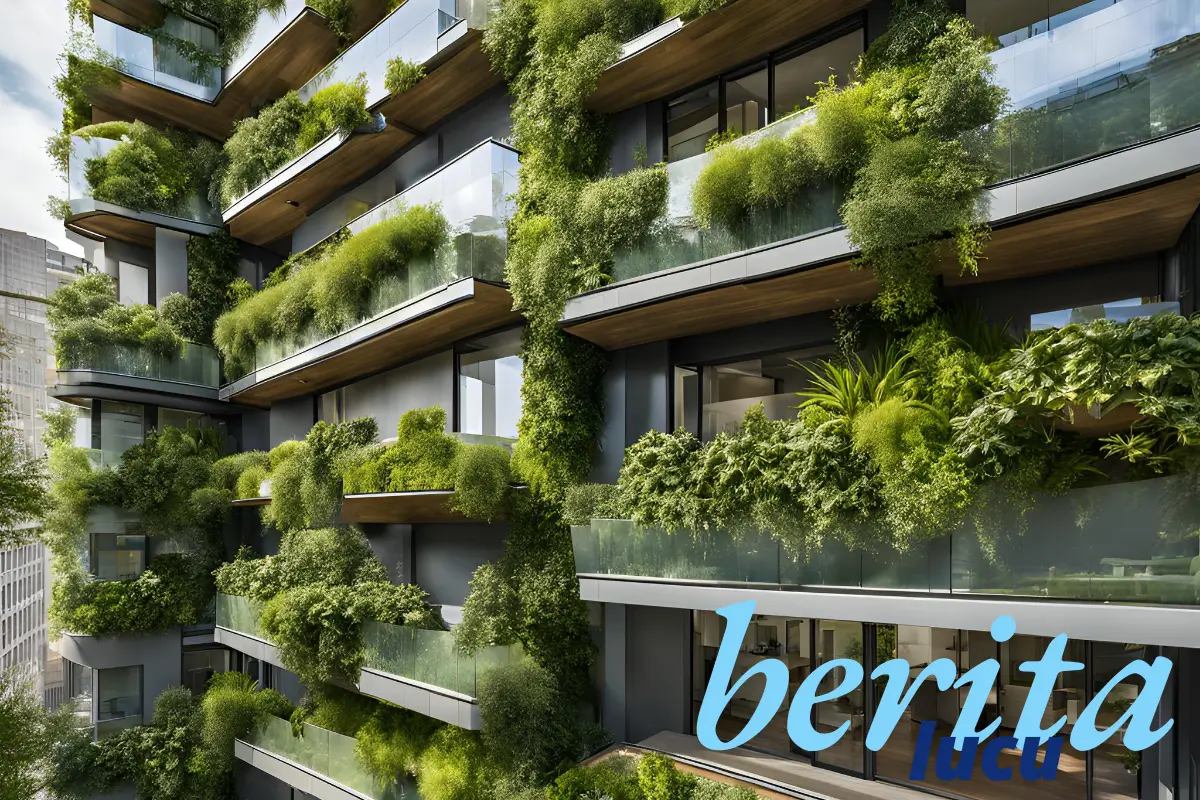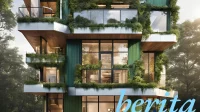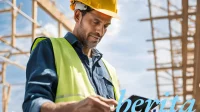As climate change accelerates and environmental regulations tighten, the construction industry stands at a pivotal crossroads. Green construction technology has emerged as a transformative force, revolutionizing how we design, build, and operate structures in the 21st century. From smart building systems to innovative sustainable materials, these technologies aren’t just reducing environmental impact—they’re reshaping the entire construction landscape while delivering impressive returns on investment.
The numbers tell a compelling story: with buildings accounting for 40% of global energy consumption and the green building materials market projected to reach $425.4 billion by 2027, the industry is witnessing unprecedented growth in sustainable solutions. This surge isn’t merely about environmental responsibility; it’s about creating smarter, more efficient, and ultimately more profitable construction projects.
As we explore the latest developments in green construction technology, we’ll examine how these innovations are not only meeting current sustainability challenges but also setting new standards for the future of construction.
Understanding Green Construction Technology
In today’s construction landscape, green technology represents more than just environmental consciousness—it’s become a cornerstone of modern building practices. With 57% of construction firms actively implementing sustainable technologies, the industry is experiencing a fundamental shift in how projects are conceived and executed. This adoption isn’t just trend-following; it’s a response to compelling data showing that buildings consume 40% of global energy resources.
Key Technologies Transforming Construction
At the heart of green construction lies a suite of innovative technologies that are fundamentally changing how buildings operate and interact with their environment. Here’s a closer look at these game-changing solutions:
Smart Building Systems
Imagine a building that thinks for itself. Modern smart building systems act as the brain of green construction, utilizing advanced IoT sensors to create an intelligent ecosystem. These systems continuously analyze and adapt to usage patterns, automatically adjusting lighting, heating, and cooling to optimize comfort while reducing energy waste by up to 30%. From motion-triggered lighting to AI-powered climate control, smart buildings are setting new standards in operational efficiency.
Sustainable Materials
The foundation of green construction begins with its materials. Today’s sustainable building materials represent a perfect fusion of innovation and environmental responsibility. Low-carbon concrete alternatives are leading the charge, slashing CO2 emissions by half while maintaining structural integrity. Recycled composites are revolutionizing insulation, while biodegradable materials are finding new applications in temporary structures and interior design. Each material is carefully selected to minimize environmental impact without compromising on durability or performance.
Energy Efficiency Solutions
Energy efficiency in green buildings is achieved through a sophisticated combination of technologies working in harmony. Solar integration now powers up to 70% of building energy needs, while cool roofs technology reflect unwanted heat to reduce cooling costs by up to 25%. Geothermal systems tap into the earth’s constant temperature to provide year-round climate control, and smart windows automatically adjust their tint based on sunlight intensity, creating a dynamic response to changing environmental conditions.
Water Management Systems
Water conservation in green construction has evolved far beyond basic efficiency measures. Today’s systems take a holistic approach, integrating smart irrigation that reduces water usage by 30% through precise, need-based distribution. Rainwater harvesting systems capture up to 85% of rainfall for reuse, while greywater recycling further reduces fresh water consumption by 40%. These systems work together with storm water management solutions to prevent local flooding while ensuring every drop of water is used effectively.
Measurable Benefits and ROI
The adoption of green construction technology delivers substantial returns across multiple dimensions, making it an increasingly attractive investment for developers and property owners.
Financial Performance
Green buildings consistently outperform traditional structures financially. Operating costs typically decrease by 14% annually through reduced energy and water consumption. Property values increase by 7-10% on average, while commanding premium rental rates. Additionally, these buildings qualify for significant tax incentives and rebates, accelerating ROI timelines.
Environmental Impact and Sustainability Metrics
The environmental benefits are equally impressive:
- Carbon emissions reduction of 30-35% compared to conventional buildings
- Water conservation reaching 30-50% through integrated management systems
- Construction waste reduction of up to 75% through recycling and smart material usage
- Enhanced indoor air quality, reducing sick building syndrome by 30%
Operational Advantages
Long-term operational benefits include:
- Reduced maintenance costs through predictive systems
- Extended building lifecycle by 10-15 years
- Higher occupancy rates (95% versus 87% in traditional buildings)
- Improved tenant satisfaction and retention (12% higher than conventional buildings)
Investment Timeline
Most green building investments show positive returns within 3-7 years, with some energy-efficient systems paying back in as little as 2 years. When combined with government incentives and increased property values, the business case becomes compelling.
These benefits create a strong value proposition, explaining why 82% of commercial property owners are prioritizing green technology investments for new construction and renovations.
Future Outlook: Green Construction Technology 2024 and Beyond
As we look toward the future of construction, green technology is rapidly evolving from an innovative option to an industry imperative. The market’s projected growth to $425.4 billion by 2027 reflects this fundamental shift in building practices. This expansion isn’t just about market size—it represents a deeper transformation in how we approach construction and building management.
Innovation is accelerating across all sectors of green construction. 3D printing technology is revolutionizing how we create sustainable building components, while advancements in AI and IoT are making buildings smarter and more efficient than ever before. Perhaps most promising is the development of carbon-negative materials, particularly in concrete alternatives, which could transform construction from a carbon producer to a carbon sink.
The regulatory landscape is also evolving, with governments worldwide implementing stricter sustainability requirements. These changes are driving innovation rather than hindering it, pushing the industry to develop more creative and efficient solutions. As costs continue to decrease and technology becomes more accessible, we’re seeing wider adoption across all construction sectors, from residential to commercial projects.
Looking ahead to 2025, the industry is poised for even more dramatic changes. The integration of prefabricated sustainable components is streamlining construction processes, while smart energy systems are becoming standard in commercial buildings. This evolution isn’t just about meeting environmental standards—it’s about creating buildings that are more efficient, more comfortable, and more valuable in the long term.
Conclusion
Green construction technology has moved beyond being just an environmental choice—it’s now a strategic imperative for the construction industry. The compelling combination of financial returns, environmental benefits, and regulatory compliance makes it an essential consideration for any modern construction project.
As technology continues to advance and costs decrease, we’re seeing these solutions become increasingly accessible to projects of all sizes. The data is clear: buildings incorporating green technology consistently outperform traditional structures in energy efficiency, operational costs, and property value. With potential energy savings of 30-50%, increased property values of 7-10%, and significant environmental benefits, the business case for green construction technology is stronger than ever.
Looking ahead, the integration of AI, IoT, and sustainable materials will continue to push the boundaries of what’s possible in construction. For developers, property owners, and construction professionals, embracing these technologies isn’t just about staying current—it’s about future-proofing investments and contributing to a more sustainable built environment.
The future of construction is undeniably green, driven by innovation, necessity, and remarkable returns on investment. Those who adapt and embrace these technologies now will be best positioned to thrive in this evolving landscape.
Frequently Asked Questions (FAQ)
Q: What is green construction technology?
A: Green construction technology encompasses sustainable building practices, smart systems, and eco-friendly materials designed to minimize environmental impact while maximizing energy efficiency and resource conservation. It includes technologies like IoT-enabled building management systems, sustainable materials, and advanced water conservation solutions.
Q: What are the most cost-effective green technologies to implement?
A: LED lighting systems, smart thermostats, and water-efficient fixtures typically offer the fastest ROI, often paying back within 1-2 years. Solar panels and energy-efficient HVAC systems, while requiring larger initial investments, generally show returns within 3-7 years through reduced operational costs.
Q: How does green construction technology improve building performance?
A: Green technologies enhance building performance through reduced energy consumption (30-50% savings), improved water efficiency (30-50% reduction), better indoor air quality, and lower maintenance costs. Smart systems optimize operations in real-time, while sustainable materials provide better insulation and durability.
Q: What certifications are available for green buildings?
A: Major certifications include LEED (Leadership in Energy and Environmental Design), BREEAM (Building Research Establishment Environmental Assessment Method), and Energy Star. These certifications validate a building’s environmental performance and can increase property value.
Q: How do green buildings impact occupant health and productivity?
A: Green buildings typically show 30% better indoor air quality, increased natural lighting, and improved thermal comfort. Studies indicate up to 15% higher productivity rates and 30% lower instances of sick building syndrome among occupants of green buildings.
Q: What are the initial costs compared to traditional construction?
A: While green construction may cost 2-7% more initially, these costs are typically recovered within 3-7 years through reduced operational expenses, increased property value, and various tax incentives. Long-term savings often exceed the initial premium by 3-4 times over the building’s lifecycle.





